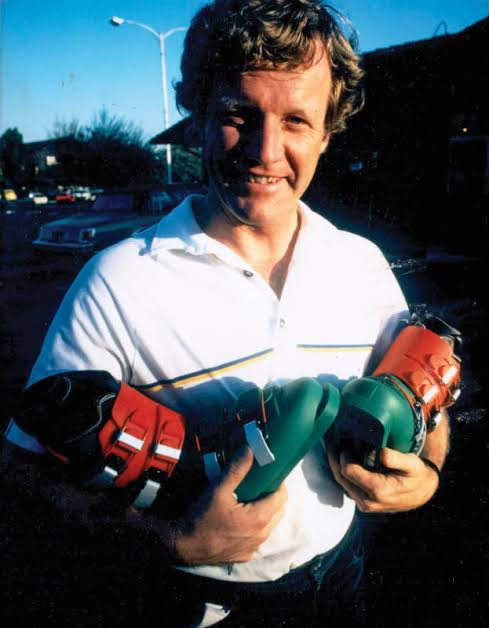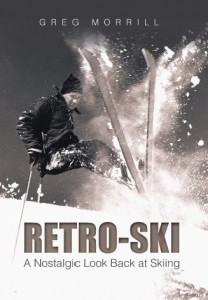If you look up “love-hate relationship” in a thesaurus, one of the resulting synonyms will be “ski boots!” Ski boots are the most important piece of ski equipment whether you’re a beginner or an expert. But since the beginning of recreational skiing, ski boots have also been the source of the most frustration.
That’s still true today despite the lifelong efforts of Sven Coomer. Coomer passed away on March 10th, 2025 at the age of 84. Most of the features we love or hate about modern ski boots trace back to Coomer.

Coomer was born in Australia in 1940 of a Swedish mother and Australian father. He was a natural athlete who made the Australian Olympic team at the age of 16! No, not as a skier, but as a pentathlete. For those not familiar with the pentathlon, the events are equestrian, fencing, swimming, pistol, and running.
Coomer would get his introduction to skiing when he went to college in Sweden to study Mechanical Engineering. He recalled his first skiing in Ȧre where he was coached by the lift operator. Each run the operator would give Coomer something new to try on the next run. Coomer was an apt student and quickly got hooked on skiing. During the early 1960s Coomer was an instructor at Innsbruck and then trained with the French ski team which included Jean Claude Killy.
In 1965 Coomer got his first real job with Puma adapting the design of running shoes for optimal performance on the new artificial track surfaces. Coomer applied his engineering background to the field of biomechanics. In particular, treating footwear and the human body as a system that have to work together to achieve a goal.
However skiing was still his primary love so he moved to the United States to head up the ski school at Solitude, Utah. In 1967 Doug Pfeiffer recruited Coomer to be one of his testers in the first ever ski and boot test. Everyone at the test was impressed with Coomer’s technical knowledge and analysis of both skis and boots. The head of Beconta, the mega-distributor of skiing gear including Nordica ski boots, hired Coomer and shipped him off to Italy to work with Nordica on a better ski boot design.
Let’s set the stage a little. In the late 1960s, ski boots were making the transition from leather to plastic. While everyone knew that plastic had better characteristics for ski boots, there were still challenges. Some challenges were left over from leather boots and some were new. Does the term “Lange bang” ring any bells?
The first boot Coomer designed for Nordica would be their last leather boot, the Sapporo. It featured a higher, stiffer back – the spoiler, and a higher plastic-reinforced tongue. From there Coomer would go on to design the plastic Astral Slalom or Banana Boot which would dominate the market. Nordica at that time would capture 30% of the worldwide ski boot market!
Coomer can claim credit for the four buckle, two-piece overlapping shell that is still the prevalent design seen on the slopes. Other Coomer design features include removable liners and the power strap. Coomer was also the first to design women-specific ski boots.
But Coomer didn’t stop there. He also originated the three piece shell design called the Comp-3 which first appeared in the Raichle Flexon series. Today that design is used in the K2 FL3X ski boots (formerly the FT) which are very popular with freestyle, mogul, and backcountry skiers.
Coomer was the first to introduce customized footbeds and he founded ZipFit which makes remoldable liners. His last ski boot design was in 1999 for Atomic creating the flexible-sole iFlex boots. These were the basis for the Redster race boots used by both Mikaela Shiffrin and Marcel Hirscher.
Yes, ski boots can still be a pain … literally! But thanks to Sven Coomer, they are significantly better today both in function and comfort. This is particularly true in the hands of a good boot fitter. And that’s the punchline to this story: every serious skier needs to know a good boot fitter!
I loved one line near the end of Sven Coomer’s obituary. I’ve left out the names mentioned, but it’s the final part.
“He is survived by ________, ______, … and everyone still skiing.”


Leave a Reply